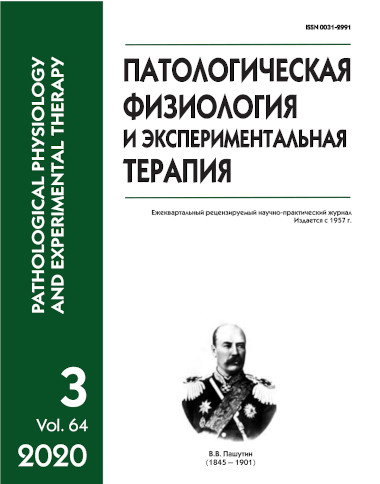Dynamics of lipid peroxidation in the large intestine during experimental Crohn’s disease and the use of rectal suppositories with long turmeric extract
Abstract
Aim. To compare effects of turmeric extract and 5-aminosalicylic acid (5-ASA) formulated into rectal suppositories on clinical symptoms and content of lipid peroxidation products (LPP) in the mucous membrane of the large intestine in experimental Crohn’s disease (CD). Methods: Experiments were performed on 70 Wistar male rats. CD was modeled by rectal administration of trinitrobenzenesulfonic acid; rectal suppositories (0.3 g each) were used every 12 h. The suppositories contained 5-ASA (50 mg) or 10% turmeric extract with an original composition (0.000075 g). On days 3, 5, and 7 of CD, the clinical status was evaluated with a modified Disease Activity Index scale, and LPP concentrations were measured in the large intestine mucosa. Results. In the course of CD in the colon, concentrations of primary, secondary, and final LPP in the heptane and isopropanol phases increased; severity of clinical signs (weight loss, diarrhea, blood in fecal masses) increased with increasing LPP concentrations. The use of rectal suppositories with turmeric extract alleviated severity of clinical symptoms and reduced LPP content primarily in the isopropanol phase of colon lipid extract. The index of CD clinical activity of CD was correlated with the large intestinal LPP content. Conclusion. Effectiveness of the local application of turmeric extract formulated into rectal suppositories was comparable with that of rectal suppositories with 5-ASA as determined by the Disease Activity Index and the LPP content in the large intestine.






